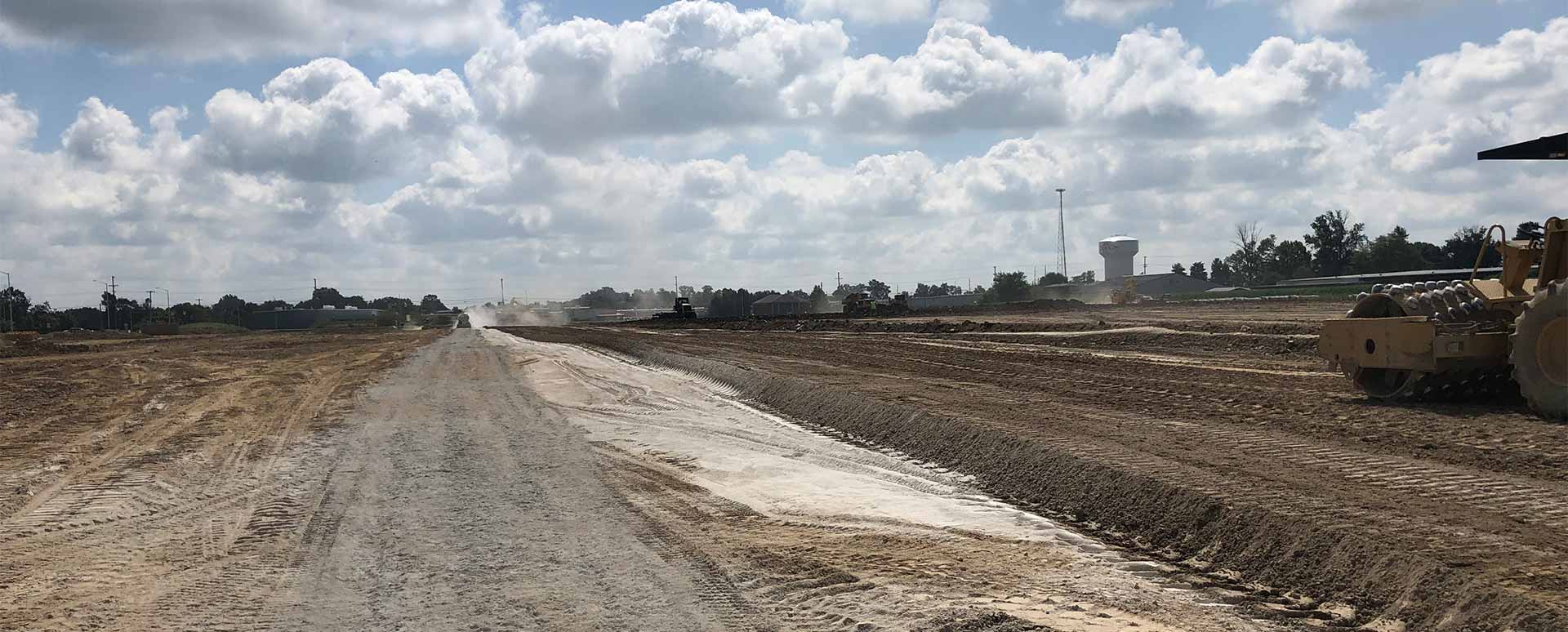Dealing with Expansive Soils in Construction

When it comes to construction projects, one of the most significant challenges that engineers and builders encounter is the presence of expansive soils. Expansive soils, also known as shrink-swell soils, have the ability to undergo significant volume changes with changes in moisture content. This blog aims to inform and educate readers about the characteristics of expansive soils, the common problems they can cause, methods for their field and laboratory determination, and effective treatment techniques.
Let’s work together.
What are Expansive Soils?
Expansive soils are a type of soil that contains clay minerals capable of undergoing considerable volume changes due to variations in moisture content. As such, they are prone to swelling when they absorb water and shrinking when they dry out. The clay mineralogy present in expansive soils directly influences their swelling potential. The clay minerals that are most likely to swell when exposed to water are montmorillonite and smectite. These minerals belong to the group of phyllosilicates and have a unique layered structure that allows them to absorb water molecules into their crystal lattice, leading to an increase in volume and subsequent swelling of the soil.
Common Problems Resulting from Expansive Soils
The presence of expansive soils in construction projects can lead to a range of costly problems if not properly identified and mitigated. When expansive soils absorb water, they undergo an increase in volume, exerting pressure against foundation soils and causing foundation movement. The forces imparted from these volumetric changes can result in significant damage to their overlying structures. This can include cracked concrete, tilted structures, uneven surfaces, bowed walls, subsidence, and compromised foundations.
Expansive Soil Field and Laboratory Determination
To effectively deal with expansive soils, it is crucial that any subsurface investigation adequately identifies and characterizes them in the field and verifies them in the laboratory. Field determination involves assessing the soil’s swelling potential, which can be influenced by factors such as soil moisture content, clay mineralogy, and the presence of soluble sulfates. Soil samples should be collected and analyzed in a laboratory to evaluate the expansive clay content and determine the soil’s engineering properties.
Laboratory testing of expansive clay soils often involves methods such as the Atterberg limits test (ASTM D4318) to assess the soil’s plasticity and shrink-swell potential. This test measures the moisture content at which the soil transitions from a solid to a plastic state, providing valuable information about the soil’s behavior. Other tests, such as the swell test (ASTM D4546) and consolidation test (ASTM D2435), can also be conducted to determine the soil’s swelling potential and compressibility.
Expansive Soil Treatment Techniques
Various techniques can be employed to mitigate the detrimental effects of expansive soils in construction projects. These treatment techniques aim to reduce or eliminate the expansive soil’s ability to undergo significant volume changes. Some commonly used methods include:
- Moisture Control: Maintaining a consistent moisture content in the soil can help minimize volume changes. Techniques such as proper grading and drainage systems can help control water infiltration and reduce the soil’s exposure to moisture fluctuations.
- Chemical Stabilization: Chemical additives can be introduced to the expansive soil to modify its properties and reduce its swelling potential. These additives can include quicklime, lime kiln dust, or cement, which react with the clay minerals present in the soil to improve its stability and reduce its expansiveness.
- Mechanical Stabilization: Mechanical stabilization techniques involve reinforcing the soil to enhance its load-bearing capacity and reduce its susceptibility to swelling. Methods such as soil compaction, soil mixing, and the use of geosynthetic materials can be employed to improve the soil’s strength and reduce its potential for volume changes.
- Foundation Design: Proper foundation design is crucial when dealing with expansive soils. Techniques such as deep foundations, including piles or piers, can be used to transfer the load to more stable soil layers below the expansive clay. Additionally, the use of flexible foundation systems such as mat foundations or suspended slabs can accommodate the potential movement of the expansive soil without causing damage to the structure.
The Benefits of Quicklime and Lime Kiln Dust for Treating Expansive Soils
Treating expansive soils with quicklime or lime kiln dust offers several significant benefits. Firstly, it provides a cost-effective solution compared to alternative methods, as quicklime and lime kiln dust are readily available and relatively inexpensive. Secondly, these treatments are reliable and have a proven track record in mitigating the effects of expansive soils. They are easy to apply and can be incorporated into the soil stabilization process efficiently. Additionally, quicklime and lime kiln dust quickly transform the soil by modifying its properties, reducing swelling potential, and controlling moisture content. This results in improved soil strength, increased stability, and enhanced workability, making the soil easier to compact and shape during construction. Overall, the use of quicklime or lime kiln dust as treatment agents offers a cost-efficient, reliable, and effective solution for addressing expansive soils while significantly improving the soil’s properties.
Conclusion
Dealing with expansive soils in construction projects requires careful planning and analysis of the jobsite. However, by employing appropriate strategies, engineers can ensure the safety and integrity of structures in areas affected by expansive clay soils, ultimately leading to successful construction projects.
Fortunately, there are solutions like the use of quicklime or lime kiln dust that provide a cost-effective and reliable solution for mitigating the challenges posed by expansive soils in construction projects. Lime stabilization is a treatment that offers ease of application, rapid soil transformation, improved soil properties such as increased strength, moisture control, and improved workability.
If you have any further questions or need guidance on dealing with expansive soils, please don’t hesitate to reach out to Mintek Resources for further assistance.
We're here to help you find the best solution for your next project. Let's get started. Give me a call at 937-641-9901.

Josh Weser
Mintek Resources
Related Posts
Soil Compaction: Methods, Meaning, and Effects
What is Soil Compaction? Soil compaction is the practice of applying mechanical compactive effort to densify a soil by reducing the void space between soil particles. Compaction occurs when particles are pressed together to reduce the space between them. Highly...
What is Hydrated Lime?
Hydrated lime, sometimes referred to as “slaked lime” or more likely just “hydrate”, is a versatile chemical with many uses across numerous industries and applications. Technically, hydrated lime is calcium hydroxide, Ca(OH)2, a derivative of quicklime – another...
Soil Testing for Construction
What is Soil Testing? Soil testing is an essential part of pre-construction to determine the properties and characteristics of the soil at a construction site. A series of tests are used in conjunction with each other to help engineers and construction professionals...